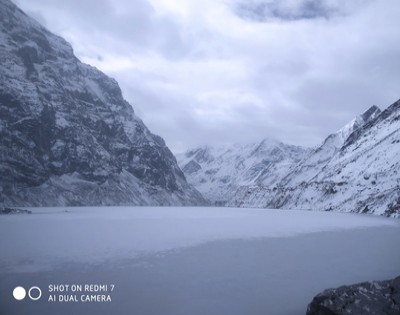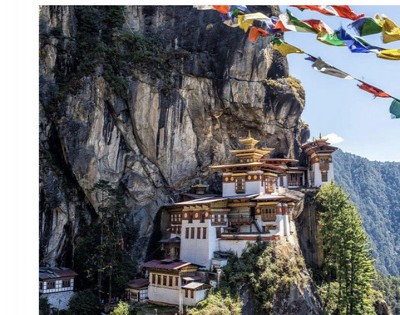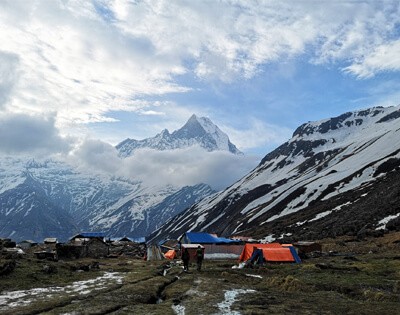Standing at an altitude of 8,848.88 m, Mt. Everest is confidently the tallest mountain in the world. Everest lies in the northeast of Nepal, bordering China (Tibetan Autonomous Region). Trekking to its base camp is a bucket list experience for everyone. The sun is shining, the towering peaks of the sky are welcoming, a gentle breeze is blowing around, which you can inhale, the daylight has changed the mountain color to gold, and the singing birds are making your trek colorful with flowers. So what is next? How do I go there? Do not worry; we have the solution.
Everest Base Camp trek preperation
Table of Contents
Practically, the higher you go, the colder you get! Yes, it is true and doable. Here are some suggestions on how can you make it happen.
Physical fitness for Everest Base camp trek
Do not be scared; if you do some regular jogging for about an hour, covering as much distance as possible and increasing the cardio endurance and strength endurance, surely it will help a lot to make your EBC trek comfortable. It does not require any mountain climbing experience for the Everest Base Camp expedition.
How do I prepare for the EBC Trek?
Take time and think about what you need and what you don’t. Leave the things behind that you want to leave! Here is a sample of the trekking equipment list for Everest trekking. Choosing the right company is another important decision. There are so many companies that offer the same activities at the lowest cost, but remember, maybe they are not registered with the Nepal government and provide government-registered and certified guides. Study the day-to-day plan and whether they offers an acclimatizing day in various altitudes or not. If it looks all okay, then ask about the certificate they gained from the Government and whether they are members of the Trekking Agencies Association of Nepal (TAAN).
Everest Base Camp Trek itinerary from Kathmandu to Kathmandu
Day 01: Kathmandu-Lukla-Phakding 2,600 m./4 hrs/8 km.
Day 02: Phakding-Namche Bazaar, 3,440 m/5 hrs/12 km.
Day 03: Acclimatization day
Day 04: Namche Bazaar-Tengboche, 3,680 m (5 hours/11 km).
Day 05: Tengboche-Dingboche 4,400 m./6 hrs./11 km.
Day 06: Acclimatization day
Day 07: Dingboche-Lobuche 4,900 m/5 hrs/10 km.
Day 08: Lobuche-Gorak Shep-EBC and back 5,130 m./6 hrs./14 km.
Day 09: Hike to Kala Patthar-Pheriche (5,545 m./16 km./ 6 hrs.)
Day 10: Pheriche-Namche, 3,440 m./7 hrs./ 21 km.
Day 11: Namche Bazaar-Lukla 2,800 m./7 hrs./ 20 km.
Day 12: Fly to Kathmandu 135 km/25 minutes/1,350 m.
Beside Everest Base Camp Trek, there is a high pass trekking, Gokyo Valley Trekking, Cho-la pass trekking, and Everest panorama Trek, which are the jewels of the Everest region.
Everest Base Camp trek equipment list
Peak climbing gear list
- Rope
- Helmet
- Harness
- Crampons
- Ice Axe (with Leash)
- Rappel device
- Pully
- Locking Carabiner
- Non-locking Carabina
- Runners Singles and Doubles
- Prusik Cords
- Hand protection tape/gloves
- Snow protection gears
- Headlamp
- For Technical
- Nuts
- Not extraction tool
- Ice tool
- Ice screws
- Camping devices
- Navigation
- Map, Compass, guidebook, wands altimeter watch, GPS, Cell Phone, Battery
- Overnight Gears
- Mountaineering tent, Sleeping Bags
- Mountain Kitchen
- Backpacking stove
- Fuel, cooking set, Dishes/bowls, eating utensils, Insulated cup, water container,
- Food and water
- Water bottles, water filters, Meals, Energy food, and drinks
Clothing and footwear for trekking
- Long underwear, Moisture-Wicking T-shirts, Mountaineering/walking pants, long-sleeve shirts, lightweight jackets, Boots (crampon compatible), Socks, Insulated down jacket, rain gear, Gloves, warm hat, gloves, Bandana, Gaiters, Sleeping bags (4 seasons)
- Health and Hygiene
- Hand sanitizer, toothbrush, and paste
- Sanitation towels, Toilet paper, menstrual products, Prescription medication, Prescription glass
Everest Base Camp trek permit cost.
Mt. Everest lies north of Pasang Lhamu Rural Village Development Committee in Sagarmatha (Everest) National Park, listed in World Heritage Sites (UNESCO). We need 3 types of permits, as below:
a) Sagarmatha National Park Entry Fees: The Sagarmatha National Park covers 1148 sq km, including the world's tallest mountain and other peaks. The park was enlisted on the World Heritage List of Natural Sites (UNESCO) in 1979. So the entry permit is compulsory for every trekker. It costs 3,000/ NPR per head and for below 10 years trekkers are free of cost. The SAARC and Indian National cost Rs. 1500 per head for a single entry.
b) Pasang Lhamu Village Development Committee Entry fees permit is new and started by the Federal Government of the Khumbu region. It cost 2000 NPR per trekker for a single entry.
c) TIMS: The Trekkers Information Management System is mandatory for all trekkers to ensure safety and security in all the general trekking areas of Nepal. The TIMS will be issued by a legal trekking company like ours, and it costs 2000 Nepali rupees per person. However, the SAARC National will cost per person 1000 Nepali rupees.
d) Local Permit: Nowadays, Khumbu Rural Municipality implements the new federal rules to collect the local Tax as a permit. So, the permit costs USD 20 for foreign nationality and USD 10 for SAARC



